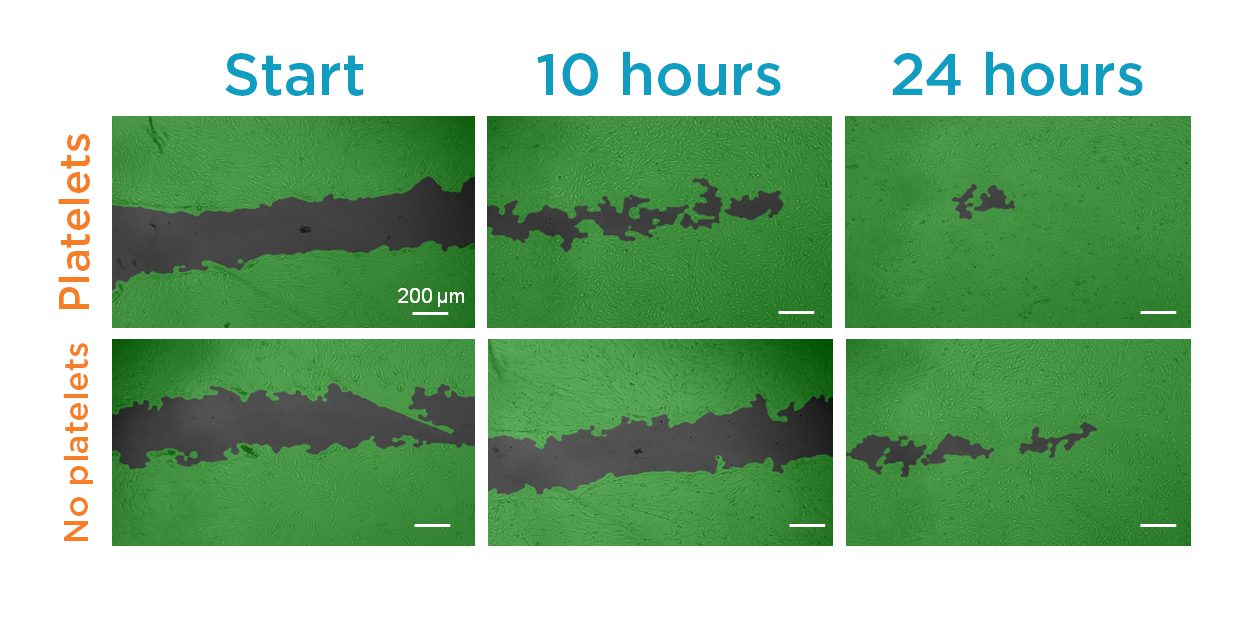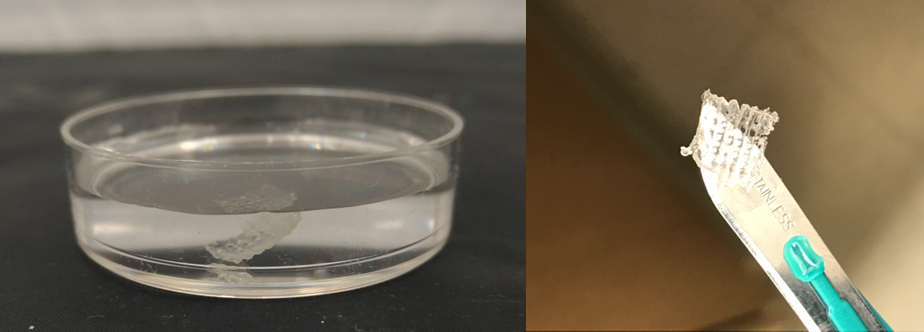By embedding platelets into a 3D printed mixture of cells and gel, a team of researchers at the University of Nebraska-Lincoln hope to improve the healing properties of tissue implants and skin grafts with printable body tissue.
Researchers from the University of Nebraska-Lincoln, MIT, and Massachusetts General Hospital have incorporated platelet-rich plasma into a bio-ink — a 3D printed mixture of cells and gel — that could eventually become the basis of skin grafts and regenerative tissue implants.
“The ultimate goal is to print functional tissue constructs that can be implanted to replace or repair damaged tissues,” said Nebraska’s Ali Tamayol, assistant professor of mechanical and materials engineering.
“One of the challenges is to create structures that, when implanted in selected tissues or organs after an injury, will release growth factors that initiate the processes essential for healing and regeneration.”
Jeremy Ruskin, professor of medicine at Harvard Medical School, collaborated with colleagues at Massachusetts General Hospital to show that the bio-ink features an optimal concentration of platelet-rich plasma and can dispense its growth factors over several days. When testing the performance of its platelet-rich ink against a platelet-less counterpart in the lab, the team saw some promising results.
In less than a day, the platelet-rich ink had prompted enough cell migration to cover about 50 percent of an artificial scratch, whereas the platelet-less edition covered just 5 percent. The ink also encouraged more than twice as many mesenchymal stem cells – which can become muscle, cartilage or bone – to migrate toward it during a 24-hour span.

Printable Body Tissue as Personalized Therapies
But these results would mean little if the ink’s gelatinous algae-derived ingredients proved resistant to 3D printing.
To help it maintain its shape, Tamayol and colleagues initially sprinkled the alginate with calcium chloride to forge bonds among some of the material’s polymer chains. This lends it strength without making it too viscous for a 3D printer.
After printing the ink into a desired 3D design, they immersed the structure in a calcium chloride solution to further strengthen it. The human body also happens to raise calcium levels at injury sites, says Tamayol, meaning that it could help reinforce the alginate after implantation.
Once bio-printing technology has matured, he predicts, the alginate could be mixed with a patient’s own cells and platelets to minimize the risk of an immune response.
“There is a trend toward using personalized therapies in many areas of medicine,” said Negar Faramarzi, the lead author of a new study detailing the bio-ink. “We tried to incorporate the growth factors in a way that keeps us on track for those personalized therapies.”
For more details on this research, The team’s findings are reported in the journal Advanced Healthcare Materials.

Source: University of Nebraska-Lincoln
Website: LINK


